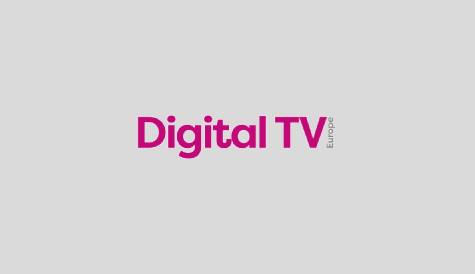DVB highlights HEVC and DVB-S2 developments
The DVB has used its presence at IBC to provide an update on work currently underway related to HEVC for both HD and UHDTV, as well as to summarise developments of extensions to the DVB-S2 satellite broadcast standard for certain applications.
At the show, the DVB is demonstrating HEVC alongside its DVB-S2 enhancements, allowing four UHD channels to be transmitted over a 36Mhz channel at a data rate of 100Mbps, while a DVB-T2 demo will show up to seven HEVC encoded HD channels being delivered in a single 8MHz channel at 64QAM at a data rate of 26.56Mbps.
Regarding HEVC, the DVB is including subsets of specifications for two types of receiver in a new version of its TS 101 154 spec. The HEVC HDTV receiver will decode formats up to 1080p50 or 60Hz. There will be two variants – an 8bit/sample and 10 bit/sample version for different market requirements..
For UHDTV, there is a spec for a phase 1 receiver for use in 2014-15. This will decode up to 2160p x 3840 pixels at 50Hz or 60Hz or lower.
David Wood, chairman of the DVB CM-UHDTV and CM-3DTV working groups, said that phase 1 receivers can be made now.
Phase 2 for UHDTV will include more quality features and will be suitable for decoder memory bandwidths that are believed to become practical by 2017-18. This includes frame rates of up to 120Hz and higher dynamic range. A meeting on this will be held next week and requirements will be published next year.
Commercial issues regarding UHDTV include what particular quality factors are important and whether UHDTV will be available for multiscreen, said Wood.
Director of the DVB Project office Peter Siebert, said that DVB-S2X – extensions to the DVB-S2 satellite standard – have recently been published. The extensions had sought to maintain the S2 fundamentals and deliver improvements. He said the main advantages are smaller roll-off options, more options for modulation and coding modes, new options for linear and non-linear channels and additional scrambling options for low signal-to-noise ratio (SNR).
The extensions also delver channel bonding over up to three channels, which Siebert said would be important for UHDTV channels. “This is one of the main advantages,” he said.
Siebert said that performance improvements would be limited for DTH services and there is little prospect in the medium term for a DVB-S3 standard. However, at high SNR values there is a significant improvement from the extensions. There is also an improvement for very low SNR ranges, which could help with mobile TV, for example, he said.
The DVB is demoing DVB-S2X with HEVC UHD content supplied by the EBU, SES, Rai and Hispasat, with technology partners including Thomson Video Networks, Newtec, Work Microwave, Pace, Ericsson, Creonic and Vestel.
Regarding DV B-T2, Siebert said this would be demo’d at the DVB booth with HEVC HD content, showing transport stream rates of 24Mbps for six to seven HD services. Content is being supplied by IRT and Arte. Other partners include the Frauenhofer Institute, Technicolor and Vestel.
The DVB chairman Phil Laven said that there are currently over 1.1 billion DVB receivers in use worldwide with a 63% share of the digital TV market. DVB-T2 has proved to be successful, with many countries transitioning or planning to transition from DVB-T.
China, Japan, North America and Latin America are the main non-DVB areas globally. The next next generation of the North American ATSC standard is not clear, he said, but the next generation will use OFDM rather than the current 8VSB modulation scheme. Laven said that the ATSC had taken DVB-T2 as “the system to beat”. The standard will embrace HEVC and MPEG DASH.
Other DVB standards – for satellite and cable – have been used universally, he said.
The DVB will be exhibiting at IBC on stand 1.D81

